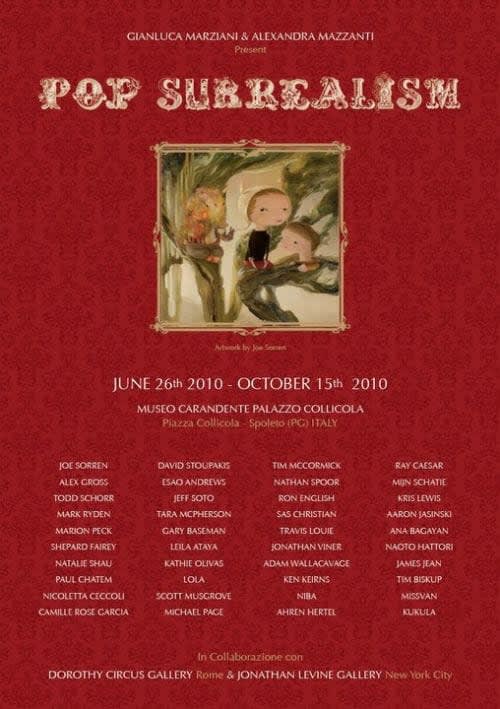The exhibition “Pop Surrealism”, curated by Alexandra Mazzanti and Gianluca Marziani, is the first event exclusively devoted to American and international Pop Surrealism. At the Carandente Museum of Spoleto, from June 26 to October 15, it will be possible to see, for the first time in Italy, the masterpieces of historical artists of this revolutionary power, born in California in the late 70s. Through the more than eighty works on display, we forward in the surreal flows of a narrative and figurative painting.
The forty artists exhibited are the major international exponents of Pop Surrealism, like its founder Mark Ryden, along with Joe Sorren, Todd Schorr, Shepard Fairey, Marion Peck, Camille Rose Garcia, Alex Gross, Ron English, Gary Baseman, Tim Biskup, Sas Christian, Kris Lewis, Ray Caesar, Jeff Soto, Travis Louie, David Stoupakis, James Jean, Adam Wallacavage, Tara McPherson, Missvan, Lola, Esao Andrews, Scott Musgrove, Jonathan Viner, Naoto Hattori Natalie Kukula Abramovich, Kathie Olivas, Natalie Shau, Mijn Schatje, Ana Bagayan, Michael Page, Tim McCormick, Nathan Spoor, Paul Chatem, Ken Keirns, Aren Hertel, Leila Ataya, Aaron Jasinski, and the only Italian leaders Nicoletta Ceccoli and Niba. In perfect harmony with the Surrealist roots of the thirties, the prophecies of figurative pop regenerate in a constant movement between the registration of real and immediate reworking dream. Landscapes, bodies, animals, history, nature, objects: this is the world reinterpreted by Pop Surrealism. A no-space where everything looks like the real thing, but where we perceive suspended atmospheres, a sense of agonizing waiting and silence, doubt and danger, where abnormal silences or strange noises are coming. This is a world similar to ours, where certain domestic and individual landscapes’ meaning are inverted and expressed by classical painting technique. The favorite subjects are pop icons, broadcasted by leisure media that live in our collective imagination from the world of fairy tales on. The topics vary from the vitality of childhood and adolescence to moral aspirations and chronicles of everyday life. At the same time it exceeds the unexpected and involves the incredible metropolitan, recreating a possible contemporary surrealism, son of a transverse, versatile and electronic era.












